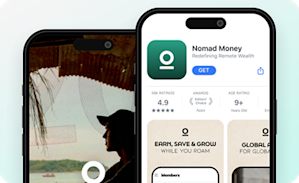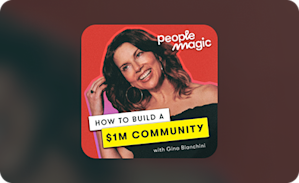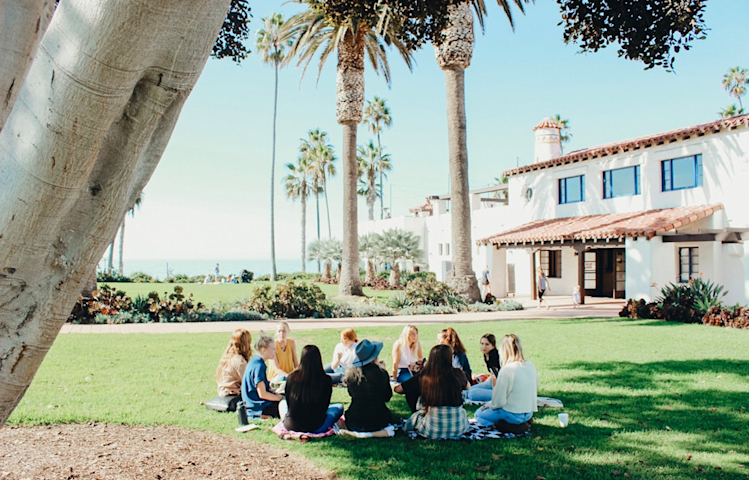Communities & Memberships
Community Gamification: A Complete Guide for Online Communities
Discover how to use community gamification to boost engagement, motivate members, and build lasting habits in your online community.
Author
Mighty Team
Last Updated
July 2, 2025
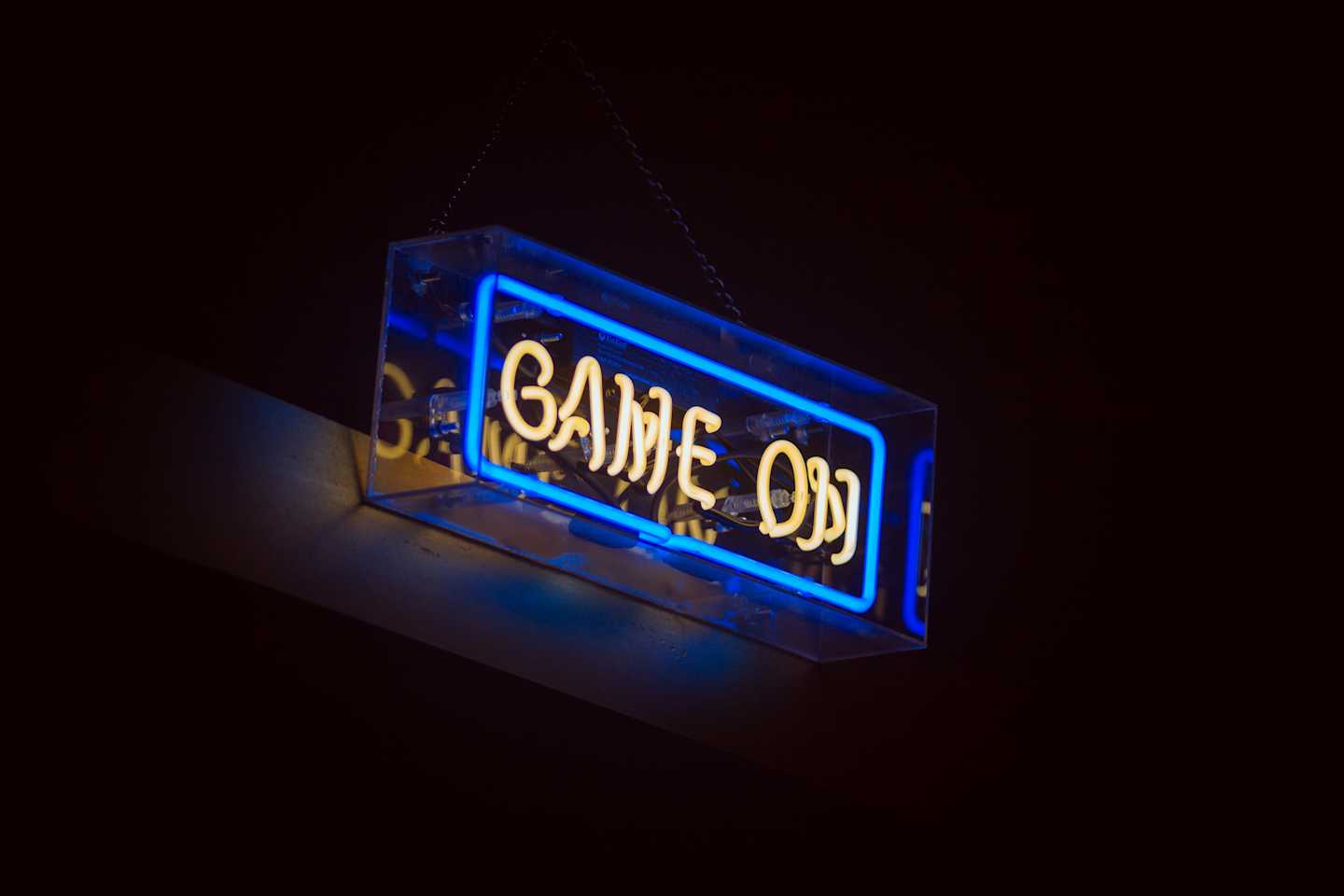
Table of Contents
- What is gamification?
- IRL examples of gamification
- Why gamification is important for online communities
- Benefits of gamification
- Types of gamification in online communities
- Some of the Risks of Community Gamification
- How to Implement Community Gamification Well
- How to measure success
- Examples of community gamification
- Conclusion
In this article
- What is gamification?
- IRL examples of gamification
- Why gamification is important for online communities
- Benefits of gamification
- Types of gamification in online communities
- Some of the Risks of Community Gamification
- How to Implement Community Gamification Well
- How to measure success
- Examples of community gamification
- Conclusion
Community gamification has become a buzzword for people building online communities, and for good reason. Gamification promises a psychological hack that can boost engagement, keep members involved, and help to get people excited about contributing to their online community.
This is something that, obviously, every community manager wants. But wait! Is the buzz worth it?
In this article, we’ll introduce you to gamification. We’ll show you what’s really working in community gamification, and give you some things to be careful of. And we’ll give you some practical and realistic steps to implementing gamification in your community.
What is gamification?
Gamification is the process of turning everyday tasks or activities into games. Simple enough. This is usually done through a challenge and reward mechanism, which involves turning activities into games.
For example, in an online community, you might reward members who post on a regular basis with badges. At the very basic, this is gamification. It takes something community members would be doing and adds a challenge component to it with a reward.
In the words of the wise Mary Poppins, “To every job that must be done, there is an element of fun. You find the fun, and snap, the job’s a game!”
The problem is when we talk about gamification, it seems that pretty much everybody is adopting the buzzword, which is great. It's not a bad thing that we are seeing gamification used across all walks of life. It's probably inevitable.
But not all gamification is created equally. And the problem is when we are seeing gamification almost everywhere, it begins to lose the spark.
And there’s another problem. Move over, Mary Poppins. Because here’s a hard truth.
In the words of Jane McGonigal, who has built a career talking about gamification, “Gamification can’t make someone do something they don’t want to do.”
It’s not a catch all or a trick to make people do things they hate doing.
But the good news is that for things that are a bit challenging that we want to do, gamification can be the perfect tool to get us to the next level. A roundup of studies on gamification found that it’s not the panacea it’s seen as. But it does show that gamification is most effective in education.
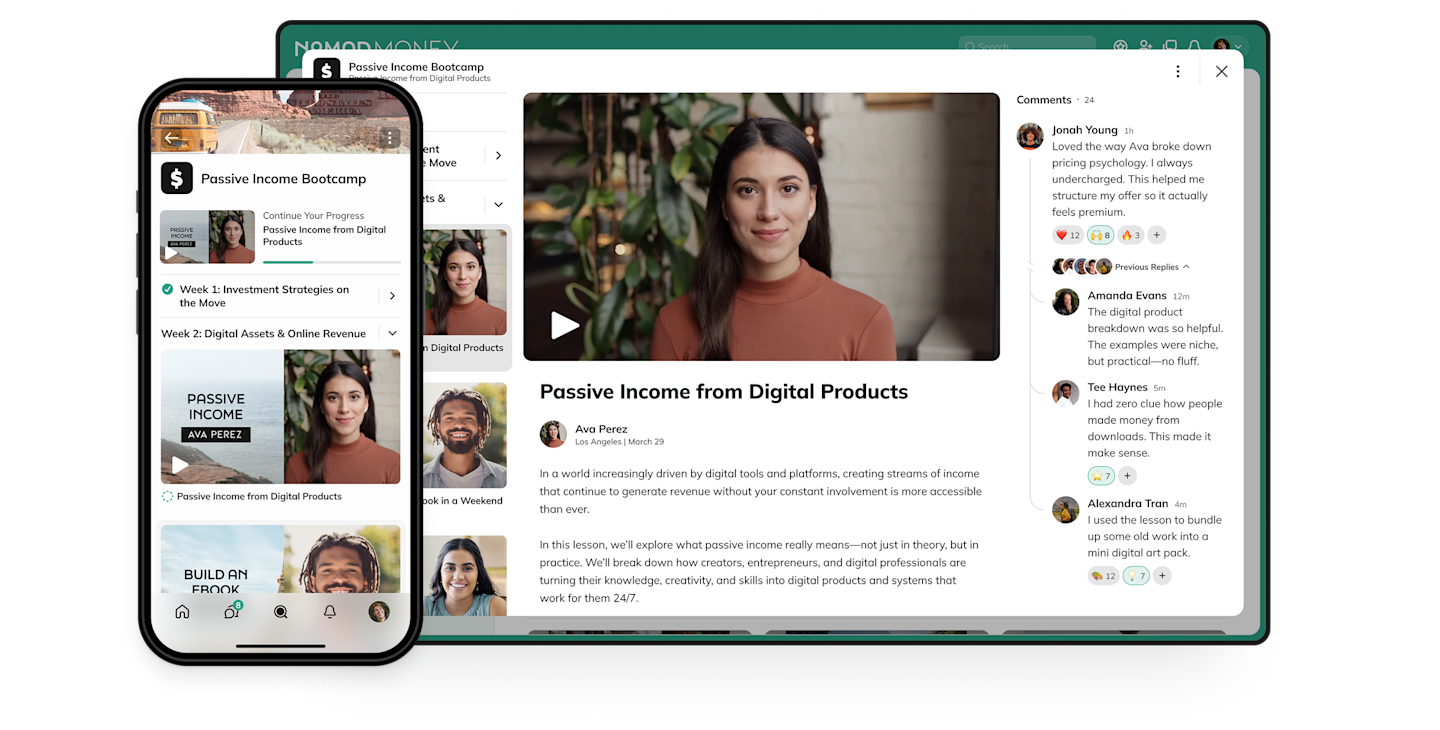
IRL examples of gamification
We are seeing gamification adopted through many elements of our life.
When people put a step counter on their wrist, they are gamifying their exercise. The psychology behind this is pretty simple. By adding a reward component to behavior that we want, it can create a dopamine release in the brain, making it more fun.
Another obvious example of gamification is Duolingo. Duolingo took language learning and added game components, incorporating challenges, streaks, and leaderboards. The result is a language app that has exploded in popularity.
At its core, Duolingo isn't really doing anything different than any other language course did. It will teach you vocab and grammar. It will help you practice the sentences. But by making a game out of it, adding daily streaks, it can create ongoing routine behavior.
Plus, Duolingo shows that there's one more secret to gamification. It's not just about a dopamine release. It's about building ongoing habits that repeat day after day, week after week, month after month.
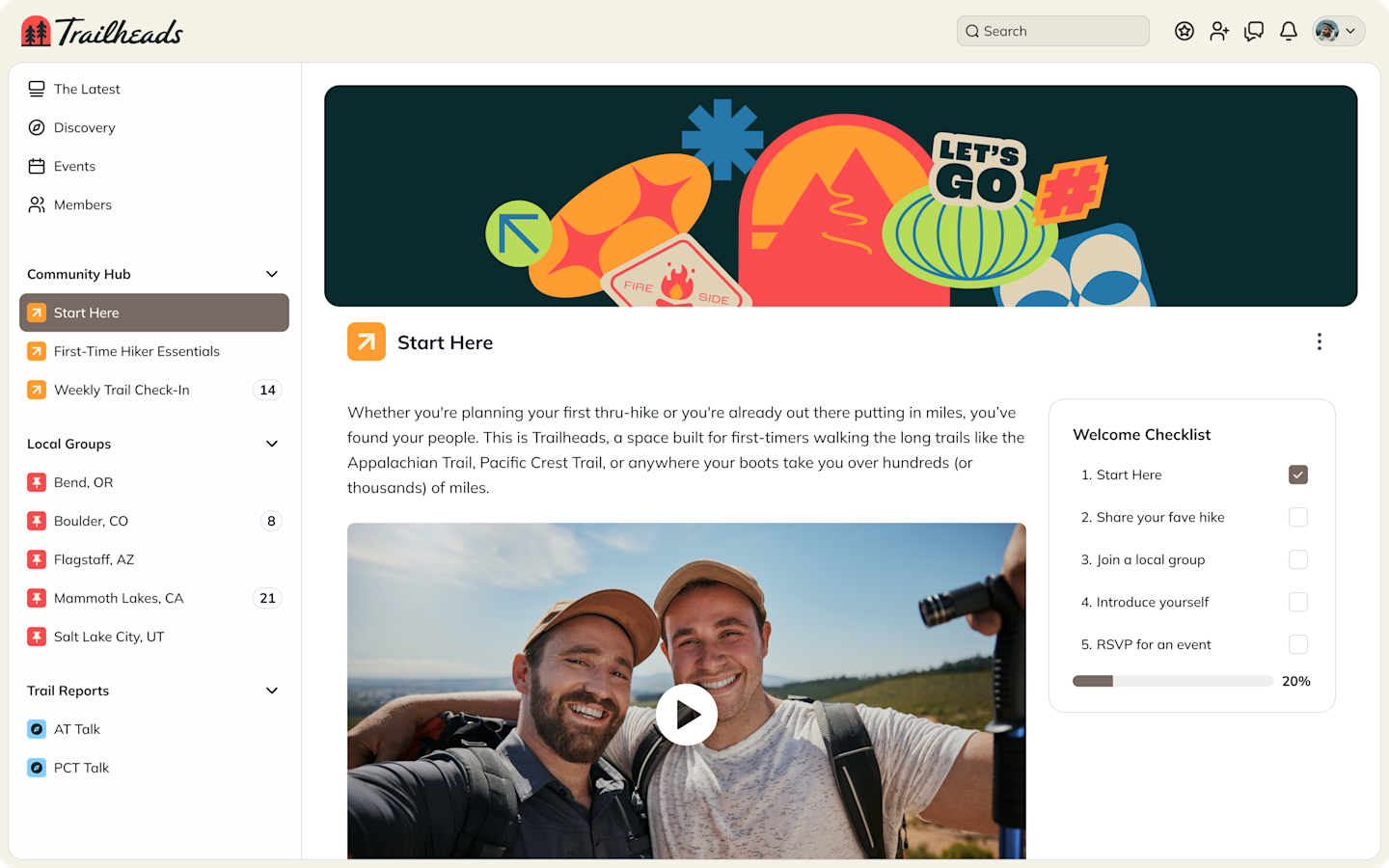
Why gamification is important for online communities
And this is where gamification gets important for community building, too. After all, having your members log on for one day to do a challenge is great. But you don't just want one day of engagement. You want months and years of engagement.
So, gamification has to be more than just one challenge and reward. It has to be persistent, ongoing challenges and rewards that track and reward behavior.
There are a few other psychological components that make gamification something our brains love. On the one hand, there's competition. Gamification doesn't just work because of a dopamine release. It also works because we are intrinsically competitive. If you're in a community and you're in a competition with fellow members, it can be a healthy and fun way to stay engaged. There's also social recognition.
Any game has winners. So adding in features that help to celebrate winners who have gone above and beyond is also the perfect motivating factor.
Benefits of gamification
According to Jane McGonigal’s book, Reality is Broken, gamification has some incredible effects on us:
Optimism: Games give us the motivation to keep working toward a challenge.
Relationship-building: Games teach us to work together and build connections.
Blissful productivity: Immersing in work that produces results.
Meaning: Games help us connect to something bigger than ourselves.
Types of gamification in online communities
Want to add gamification to your online community? These are some of the most common ways to do it!
Point systems and scoring mechanisms. This gamification tactic rewards members with points for activity. For example, every time they post or respond to a post, the points are collected, and this can turn into some sort of activity score. This can be for bragging rights or connected to a reward.
Badges. Adding badges brings a visible status symbol into gamification. It gives members a way to show off and lets other members know they are celebrated.
Levels. Levels are also a great way to boost gamification over a long term, structured journey. When people know that over time, they can level up, it makes it a long term game.
Leaderboards. Leaderboards are visual representations of the people who are the most engaged. They can be a way to show off members' accomplishments.
Progress tracking. Progress tracking is usually intrinsic motivation. Progress tracking can help your members understand their own behavior. And for those who are less externally competitive, it can help them to progress on their own terms.
Special privileges. When we talk about rewards, obviously, leaderboards and badges have their place. But one really great way to reward members is with extra goodies. Secret courses, private events, bonus physical or digital products. These are prizes that can make gamification really work.
Unlockable features. In the same vein, having features members can unlock in a community does the same thing. It creates a reward culture where people know that they can benefit from their hard work.
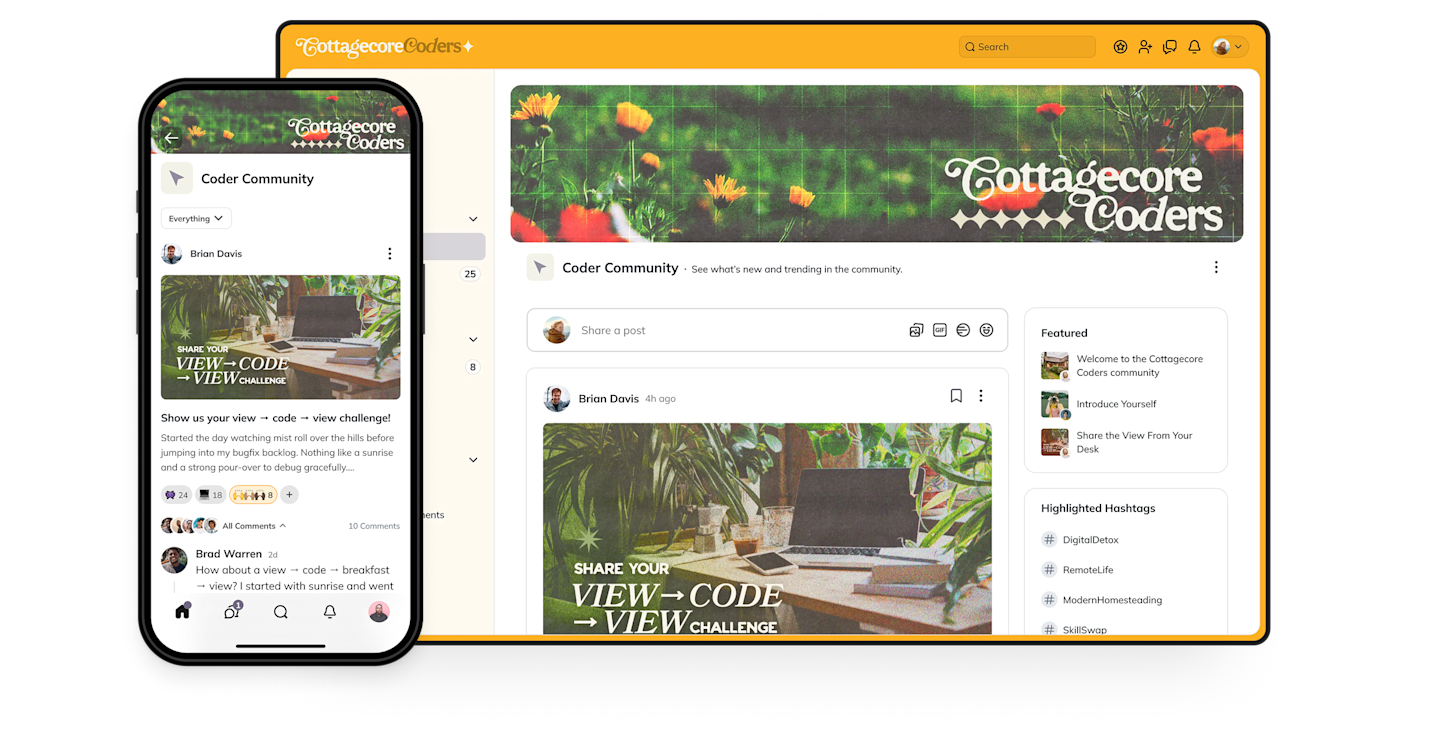
Some of the Risks of Community Gamification
While gamification is pretty much everywhere, that doesn't mean it comes without its risks. There are a few key things you need to understand before you implement gamification in an online community.
Gamification shouldn't come at the cost of real community engagement. Motivating your members with prizes, unlocks, or rewards can have a powerful psychological effect. It can also make them forget the real reason they showed up to a community in the first place: to make friends, build relationships, and–above all–to achieve some kind of transformation. If not done well, gamification can be a threat to good engagement.
Alienation. Gamification can also make some members feel like they are alienated or second-class citizens. While it's great to reward members who do well, not every member has the same time or energy to put into the community. This can be a double edged sword. Making some people feel good about their engagement can also make others feel bad about their lack of engagement.
Loss of effectiveness. We already mentioned that gamification is everywhere all the time. At some point, we have to wonder if gamification is going to lose its effectiveness. After all, when everything from your breakfast cereal (collect all the box tabs) to your daily walk, to your daily shopping (collect all the points) has been gamified, it starts to lose a little bit of its appeal. This can take away its effectiveness, and it can make your members roll their eyes instead of rolling up their sleeves.
Paternalistic. Gamification can feel a little bit paternalistic. After all, your members know what's happening. They know what the game is. If they feel like you are gaming them, they might check out.
Loss of true community. This is a serious dark side to gamification. If somebody sends you a message or responds to your post, is it because they really want to talk to you? Or is it just because they are trying to get more points? It can have a detrimental effect on human connection if it feels like people are just connecting to game the system and not because they actually care about you. This can actually be really psychologically damaging in a community.
All in all, we believe in gamification!
We have built some great gamification features into Mighty Networks. But that's not to say you should gamify everything, everywhere all at once. Move with caution, be thoughtful, and watch to make sure your gamification isn't costing you your members' engagement.
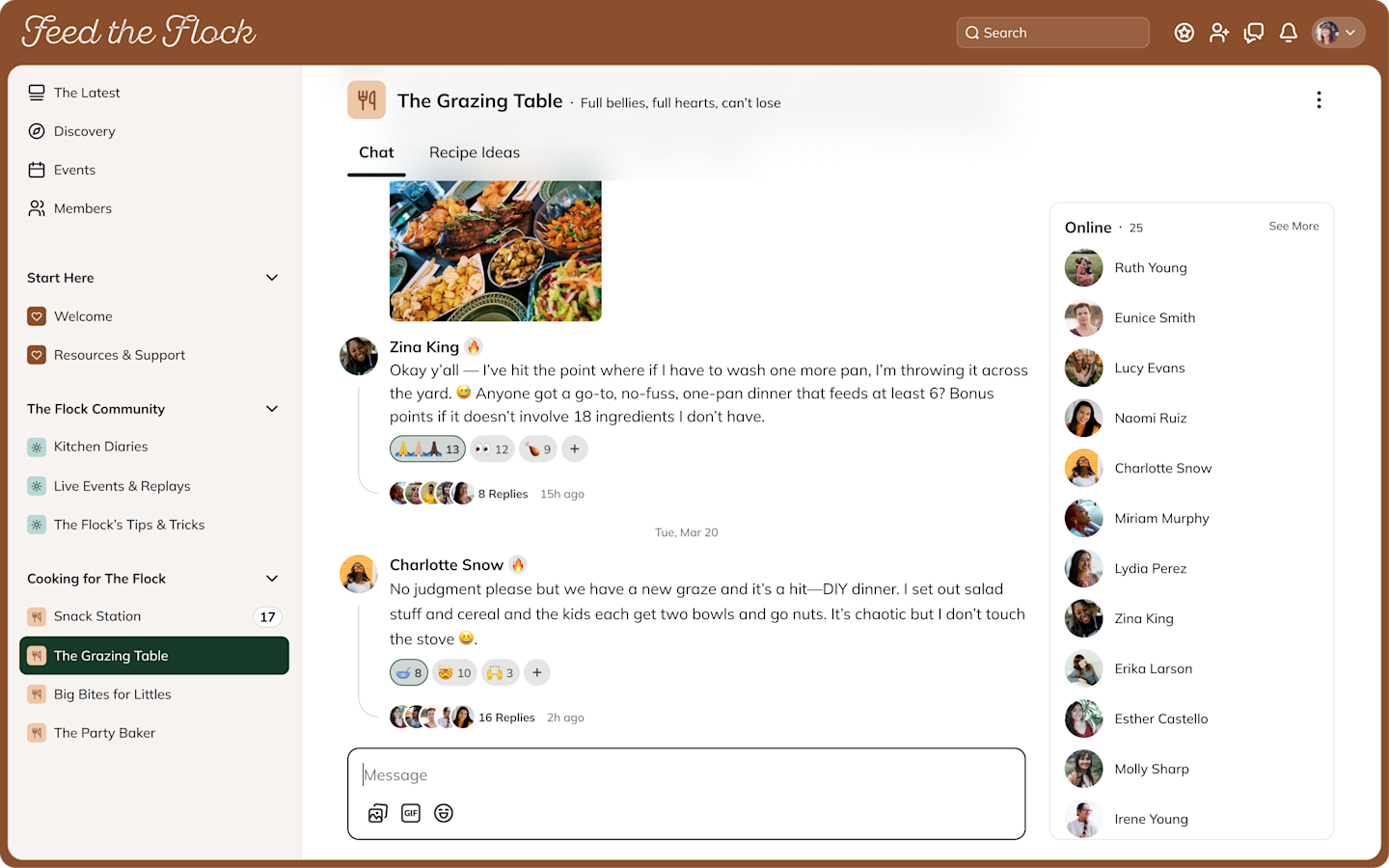
How to Implement Community Gamification Well
1. Understand your members
This means having a clear understanding of their goals and Big Purpose. It also means understanding their motivations.
Your members already have an intrinsic motivation for being in your community. If you have set your Big Purpose and have a clear Ideal Member, you know the transformation you need to give them. That is why they joined.
Map out your members' goals and plan how gamification could directly lead to them achieving those. Don't get distracted by shiny objects. And don’t gamify for the sake of gamifying.
2. Set realistic goals
Gamification doesn't need to be done all at once.
Increasing your community engagement by five or 10% could make a big difference. That might be a first goal for gamification. (It's probably best to keep these goals to yourself and not share them with members.)
3. Make sure the gamification matches your community purpose
We already hinted at this, but your gamification should tie directly into a Big Purpose. Having that in mind helps you choose a gamification strategy that actually fits your goals.
One cool example of this is the Nike Training Club. It builds in badges and milestones that–most importantly–connects runners to each other for some good-natured competition. Nike’s app now has 160 million users, and in 2023 they connected the Run Club app to Strava, to give members data to share across Strava’s 750,000 clubs at scale–sharing leaderboards, run stats, and more. Nike’s apps have been a huge success and an awesome example of gamification as well as a boost for brand engagement.
For example, create rewards for engaging in your content. Maybe you have a set of lessons around your community theme.
As members finish them, you reward them with a related prize, like a discount code for items related to your community.
4. Keep the individual and the community in balance
A great community works because members are on a journey together. Gamification can turn people into individuals in competition. Make sure your gamification is fun without sacrificing collaboration and friendship.
If you can, including collaboration in gamification can be a powerful fix. We mentioned above that one of the dangers of gamification can be alienation. Finding ways to make it collaborative can help fix this!
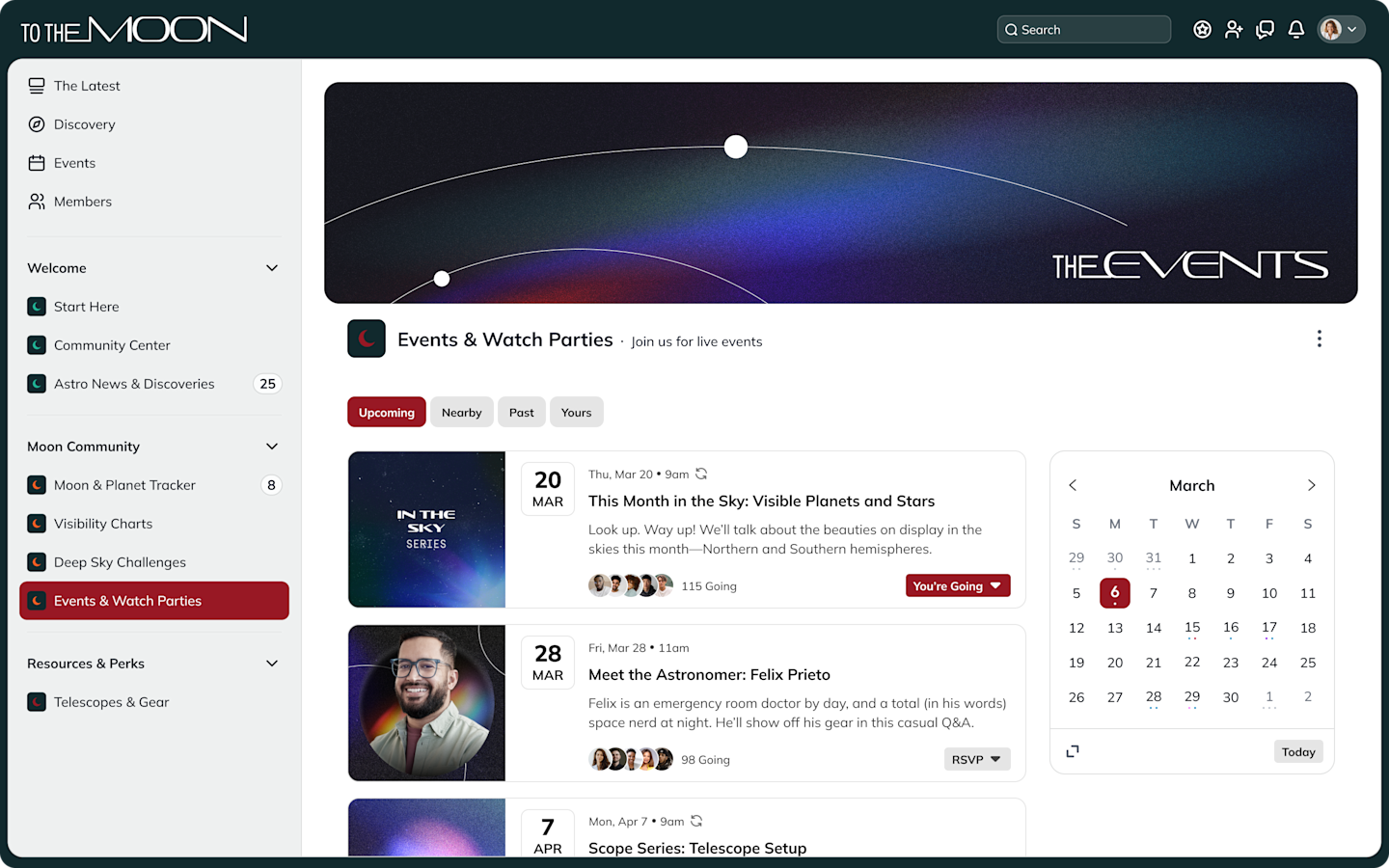
5. Keep your gamification simple
Implementing gamification strategies should be relatively easy. A good platform should have them built in (we'll talk about this later).
But, basically, you don't need to do everything all at once.
6. Create meaningful rewards
Giving out gift cards is cool, but it's actually better if your rewards link directly to your Big Purpose. For example, a one on one coaching session, as a reward, lends itself well to the progress a member is already making. Tying rewards into helping members get the transformation they want.
For instance, Nike’s community built incentives around exercise, memberships, or workouts. LEGO’s community gives members discounts and access to new products first. Aligning the incentives with your community helps deepen members’ connections to your content and each other.
And incentives don’t even have to be product or monetary-based. Apple incentivizes its online community of (unpaid) helpers with a ladder-type rewards system. The top users are given exclusive access to a dedicated Apple expert community. The incentive is prestige.
7. Don't gamify everything
Just because you can create comprehensive gamification doesn't mean you need to. Be selective. Try small experiments with gamification and watch the results closely.
8. Think long term.
Focus on gamification strategies that are going to boost your members' value in a community over months and years. Forget about the things that provide short boosts in engagement with no meaningful improvements in the long run.
The research shows that one of the big problems with gamification is that it can be short-lived. So build gamification that thinks in months and years, not days.
How to measure success
So you’re gamifying. How can you tell if it’s working? Here are a few things to consider:
Check your data. Any good community platform should give you analytics to review engagement data. This is obviously a great place to start. If more members are spending more time in your community, creating more content, and having more conversations that could be a good sign.
But go beyond the data. Qualitative surveys or even informal polls can help you understand if gamification is actually working. Make sure to always test your gamification strategies, and make sure they're helping members reach their goals and not just providing a distraction.
A/B testing. You could consider A/B testing gamification in your community. For example, in two different spaces to see if you can see results.
Long term sustainability. Make sure to watch results over months and years. In the long run, you want to make sure members are getting the transformations they care about.
Your business metrics. Obviously, a digital community is also a digital product. If you are selling memberships, you should see the success of gamification in increased revenue, and especially increased upsells. If people get more value from your community, they are less likely to churn.
Be careful of…
Toxic competition. So, maybe your members are all in. Maybe engagement is through the roof. But they're at each other's throats, fighting, quarreling, and engaging less between members. The energy is negative. This could be a sign you've created toxic competition with your gamification. Might be time to pull back a little bit.
You lose the authenticity. We mentioned this above. But if it starts to feel like your comments and engagement are people going through the motions to get points and not because they actually care about other members, you could have a problem. For example, LinkedIn has experienced this recently with AI comments. When it became known that commenting on other people's posts can boost your own reach, many would-be influencers started employing AI comments to game the system. Ultimately, this actually hurts the platform instead of helping it. Don't replicate this in your community.
Be aware of different cultures. Many of our communities on Mighty Networks are global. And while a little healthy competition is just fine in America, there may be places in the world where that competitive spirit is a little less celebrated. Make sure you understand what your members actually need and want.
Accessibility. If members have different levels of abilities, gamification can create unequal outcomes. Make sure to keep it accessible.
Examples of community gamification
Let’s check out some examples of gamification. We’ll show you some of the ways we’re using it on Mighty Networks, with some screen shots.
Streaks can show off how active members have been and for how long.

Points and recognition can be used to reward other members! This creates awesome goodwill and engagement, encouraging members to connect to each other instead of just compete!
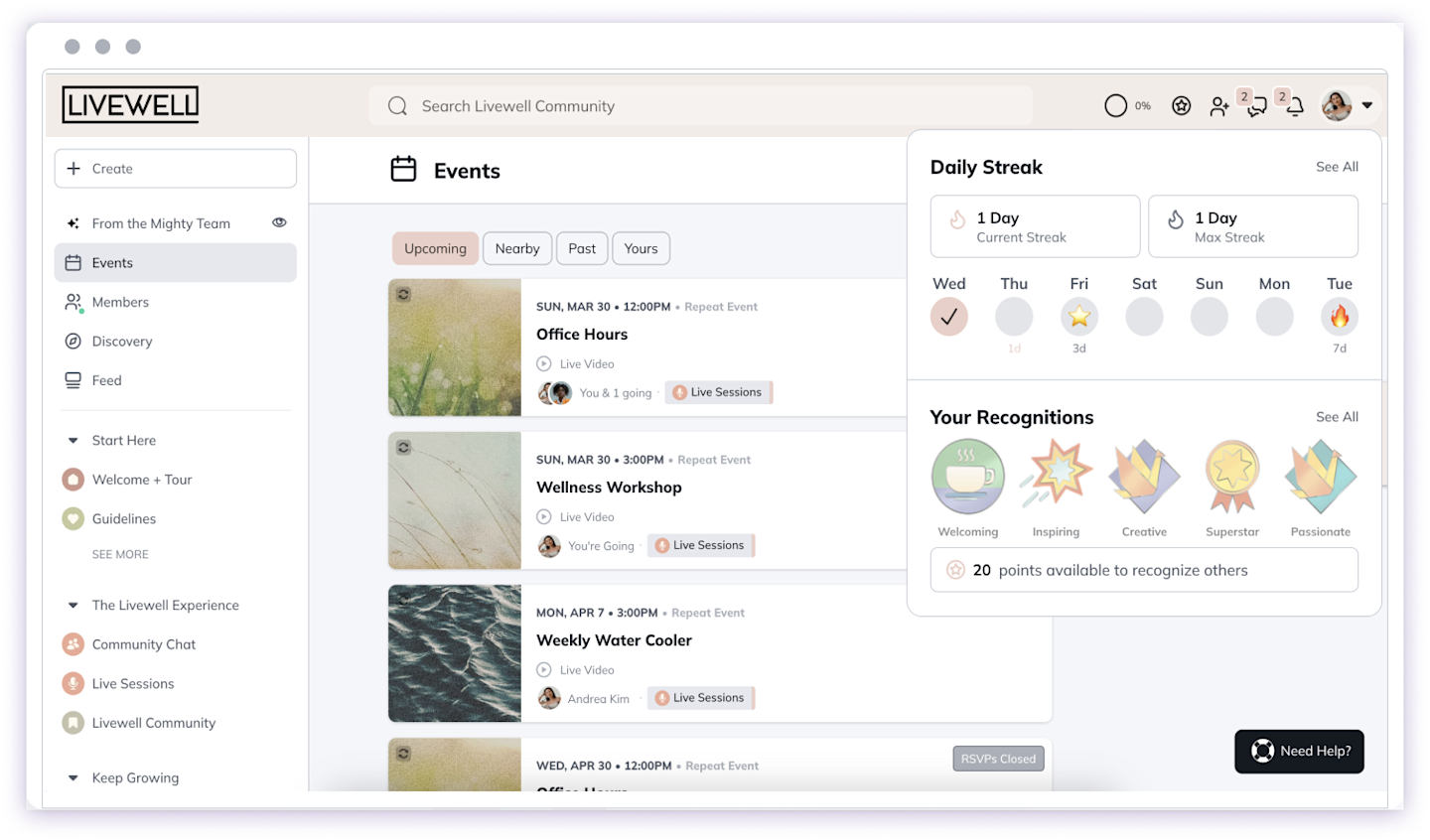
Automations help you create instant rewards that work automatically when a member reaches a checkpoint.
Leaderboards can show off your top members and their accomplishments.
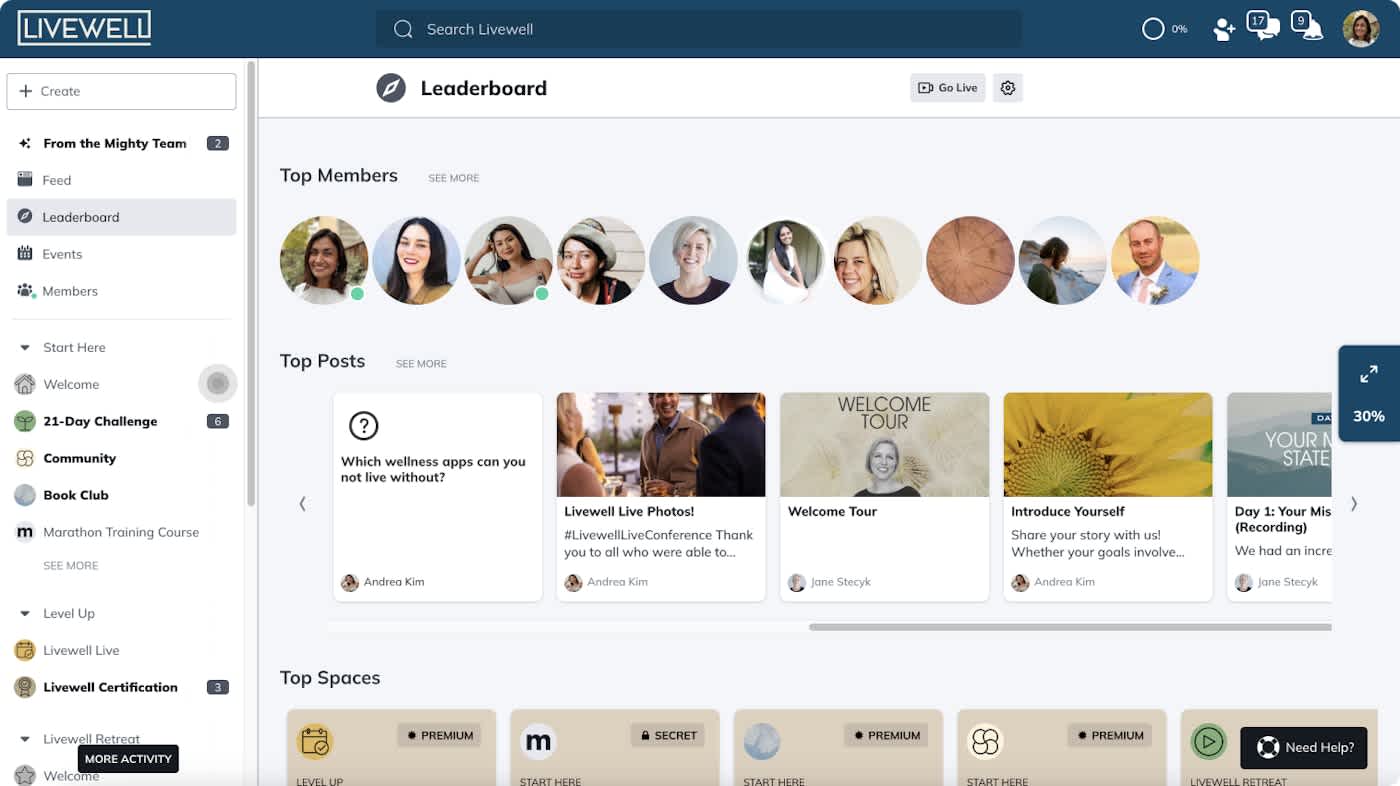
Habit trackers can be used to gamify members’ journeys through a challenge or course.

Challenges can be an awesome way to reward members with a short, winnable activity.

We have a full guide to gamifying a Mighty Network you can check out!
Conclusion
Gamification is incredible. We are seeing it everywhere, and online communities are no exception.
But be smart about your gamification. Make sure it fits with your member's goals and your community Big Purpose. Don't reward thoughtless participation or meaningless comments. Create an environment where gamification is fun and collaborative. If you do it right, it lends itself well to the spirit of your community.
On Mighty Networks, we’ve built thoughtful gamification features in–one of the things that makes us one of G2’s top-rated community platforms.
FAQs
What exactly is gamification for online communities?
Like we said above, gamification is adding challenges, competition, and rewards to everyday activities to turn them into a game! In an online community, this means adding components like rewards, leaderboards, and points, to help members engage and connect together.
Is gamification right for your community?
It could be! Do you have engaged members who could benefit from even more opportunities to engage? Then gamification might be a perfect addition? If your community has flat-lined, gamification is unlikely to fix it. You should revisit your Ideal Member, Big Purpose, and Year in the Life to make sure you’ve got the basics right.
There’s a free training here.
Where do we start?
Start by choosing the behavior you want to reward. Check out the gamification features your platform offers (you can see Mighty’s here). And make sure it fits within your Big Purpose.
Check out our free training on community gamification.
What game elements should we use?
Again, there’s no right answer. But starting with points and badges is a really easy way to launch. You can always see how it goes. One of our favorite features on Mighty you could try is Recognition. It uses points to let members award other members! This makes the game collaborative instead of competitive, and it’s really a fun way to build engagement.
How do we avoid making it feel childish or manipulative?
Connect the gamification to meaningful progress your members want to make. And don’t forget, creating great relationships is part of that progress! Avoid gamification that rewards meaningless activity (for example, “Make 10 posts a day.”)
What if people don't care?
Let’s be honest, some people will love gamification. Some might not. And some might not have any more time to spend in your community than they already spend. Adding badges isn’t going to give a busy entrepreneur more hours in a day to participate. Be kind to yourself and your members. And recognize that gamification can help make your community amazing, but ultimately it’s not everything.
Do we need special software?
Many great community platforms have some form of gamification built in. Check to see what your platform offers!
Ready to start building your community?
Start a free 14-day trial to explore Mighty—no credit card required.
More like this
Join Mighty Community
Learn the principles of Community Design™ (and see them in action) alongside thousands of creators and entrepreneurs. It's free to join!

Communities & Memberships
Community Platforms
Managing a Community
Building a Community
Growing a Community
Monetizing a Community
Content Creation
Online Courses
Creating a Course
Teaching a Course
Course Platforms
Selling a Course
Creators & Entrepreneurs
Monetization
Content Creation
Starting a Business
Website Builders
Creating & Managing a Website
Events
Event Platforms
Hosting & Marketing Events
Branded Apps
Creating a Mobile App
Coaching Apps
Community Apps
Coaching
Mastermind Groups
Starting a Coaching Business
Coaching Platforms
Filter by Category
Communities & Memberships
Online Courses
Creators & Entrepreneurs
Events
Branded Apps
Coaching
Build a $1 Million Community
This free masterclass went viral—sign up to learn why.


